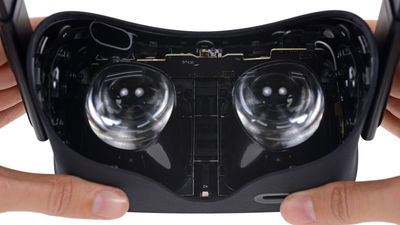Disassembled Google's Wi-Fi router "OnHub" apart, revealing the structure of surprising contrary to simple appearance

A Wi - Fi router released by Google to unify management of the home network environment is "OnHub"is. It is not an idle design like an ordinary Wi - Fi router but a simple and sophisticated appearance, yet it has 12 antennas built in & IEEE 802.11.ac compatible & it is also an ultra high performance router that can communicate at up to 1.9 Gbps. Although it is "OnHub" expected as a hub for collectively managing home wireless communication environments such as PCs, smart phones, televisions and recorders, iFixit disassembled into pieces and revealed its contents.
OnHub Teardown - iFixit
https://www.ifixit.com/Teardown/OnHub+Teardown/48129
This is "Wi-Fi router" OnHub released by Google. Although it is a router, it is equipped with a 1.4 GHz CPU (dual core), 4 GB storage, 1 GB DDR 3 L memory, and also supports IEEE 802.11 b / g / n / ac and Bluetooth 4.0. Since 12 antennas are built in, it supports dual band in both 2.4 GHz band communication and 5 GHz band communication, and additionally has USB 3.0 port.

Wired cords are stretched from the back, lights will shine through the gaps in the ceiling. This light indicates the state of OnHub, and the orange color indicates something abnormal.

The top surface is a speaker, and the red frame part is a light sensor.
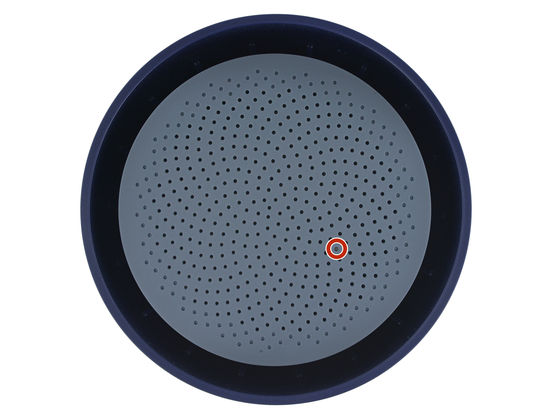
The OnHub is fixed with the outer case by a simple screw fastener, and you can easily remove the case by removing it. On the contrary, it is a little troublesome to remove and disconnect the LAN cable and power cable since you have to remove this case.

When removing the outer case, a tubular part with numerous slits entered from inside. OnHub has many slits in the tubular part so that the air permeability inside the case improves.
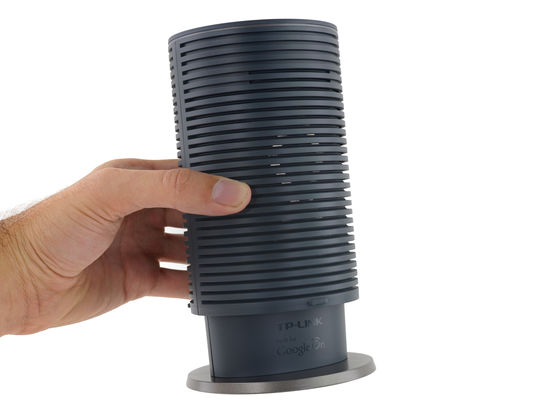
On the bottom is the manufacturer of OnHubTP-LINKThe character. To disassemble, first peel off the rubber material on the bottom ... ...
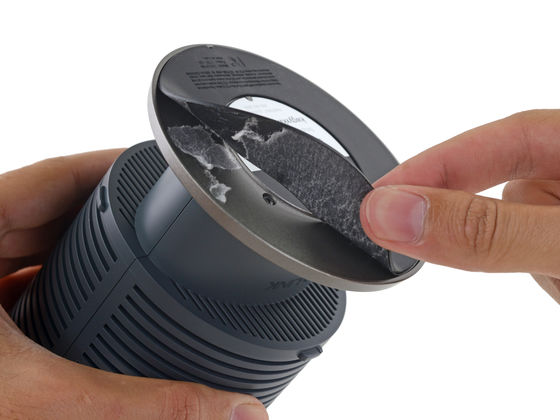
Remove the screws.
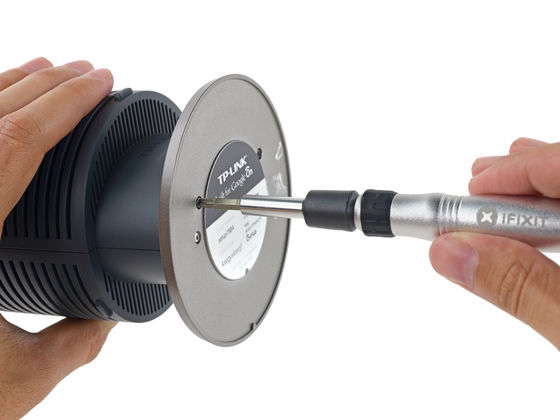
However, you can not open the main body simply by removing the screw on the bottom.

So we decided to remove the lid on the top.
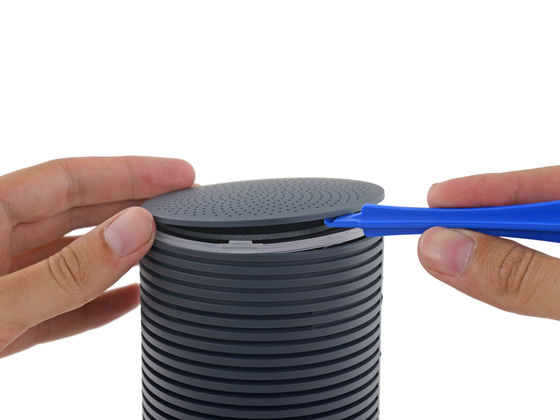
There is something more like a lid in the inside when removing the lid on the top ......

Below that is the antenna parts are dense. It seems that the lid on this one could not be completely removed even if iFixit was used. It is in the red frame partNational SemiconductorProgrammable LED driver made by "LP 5523". What is in the orange frame part is the light sensor that was in the speaker part of the top surface.

When removing the panel on the top surface, several screw holes will appear, so remove it and it's nice.
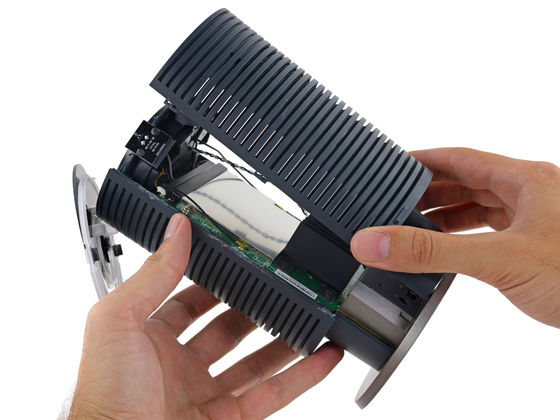
When disassembling the main body into two, it can be confirmed that the antenna module is arranged in a circular shape on the top surface part.
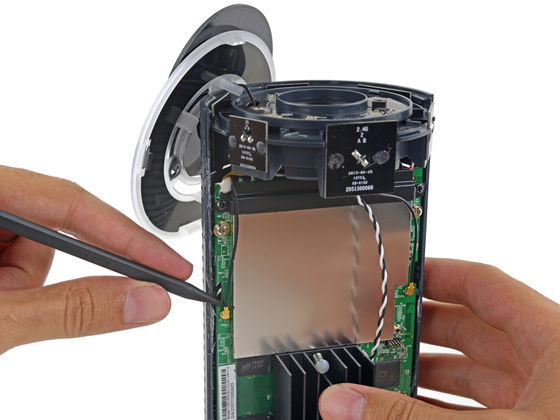
A lid like the lid at the top of the antenna is a device for detecting the congestion situation of the network and it becomes detachable at the stage where the main part is disassembled into two.

Continue to disassemble parts inside the main body. Twelve cables extend from the circular antenna module, six of which are for 2.4 GHz band communication, the remaining six are for 5 GHz band communication. In addition, the longer black cable extending to the lower right is connected to the device for detecting network congestion. IFixit speculates that cables are color-coded to make it easy to repair the terminal, but it is unknown which color shows what.

Purge all the cases containing the slits that covered the main body. I was surprised that the main body part was protected doubly by the case with the outer case and the case with the slit.
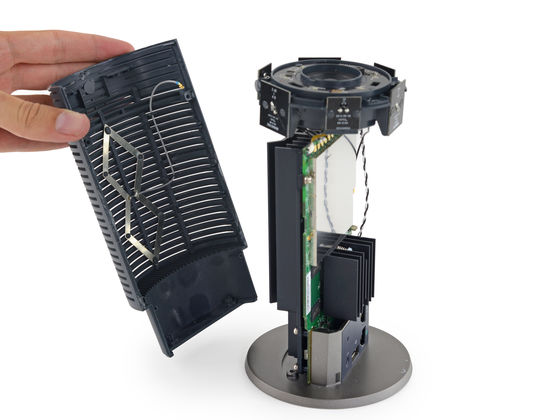
A lot of cables stretched from the antenna module, "eerie like a tentacle" and iFixit.

Remove the twelve cables connecting the antenna module and the motherboard.
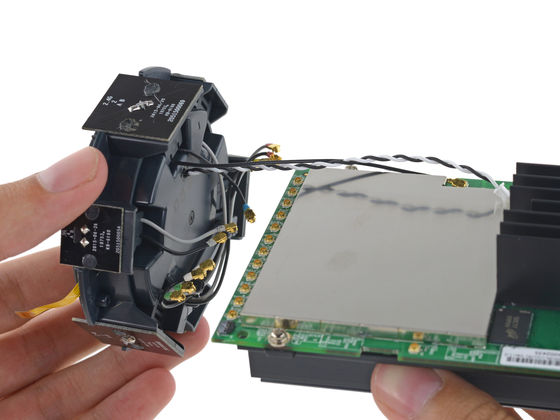
A huge speaker at the center of the antenna module.
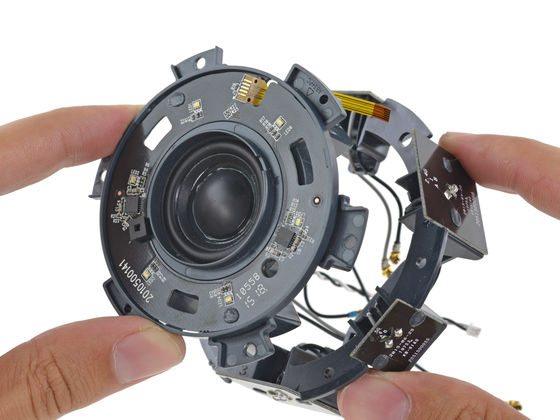
The black and white cable that was connected to the motherboard was the one of the speaker.
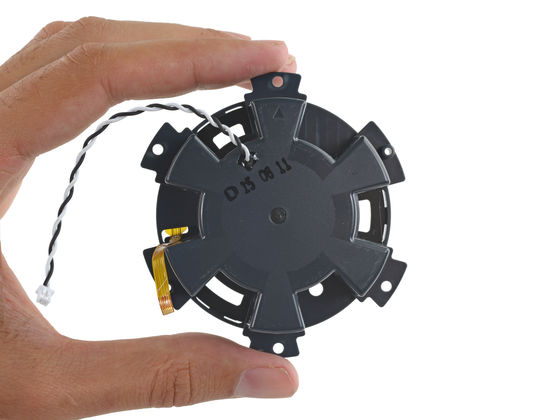
When the speaker part is removed, the antenna module is small sizeStar gateIt looks like. Something like the six boards on the outside of the antenna module, the one with the small size is the antenna for 5 GHz band communication, the larger one is the antenna for the communication in the 2.4 GHz band. Two antennas are built in one board and it can cover 120 degrees. So, in order not to interfere with the antenna for the same frequency, three are arranged to point in different directions from each other.
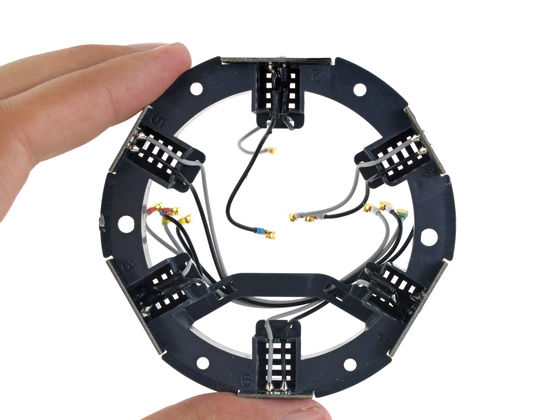
If you look closely at the board, it says "2.4 GHz". Also, the longest cable among the cables extending from the antenna module is the one on the motherboardZigBeeIt is connected to the coprocessor.

Heat sink on motherboard. In addition to heat radiation, it also plays a role as a reflector to fly away Wi - Fi even a little.
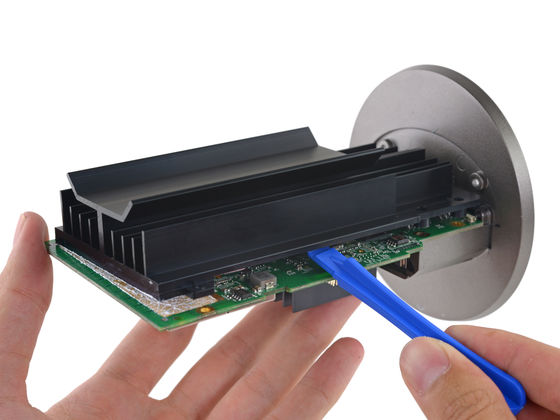
Separate the heat sink from the motherboard.
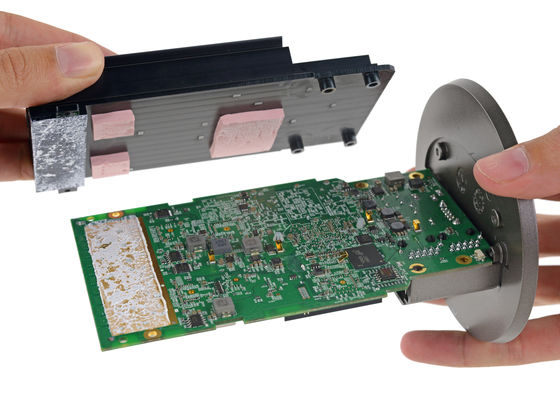
Succeeded to completely separate the motherboard by removing the foundation of plastic OnHub.
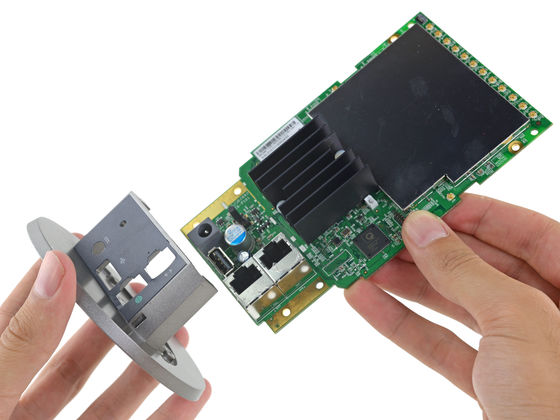
Chips on the motherboard are in the red frame partQualcomm Aceros1.4 GHz CPU (dual core) "IPQ 8064". Micron's 4 Gb DDR 3 L SDRAM in the orange frame part "MT 41 K 256 M 16 HA". Yellow / yellow green / light blue frame parts are "QCA 8337", "QCA 9882", "QCA 9880" of Qualcomm Aeros. In the blue frame part is Silicon Laboratories' network coprocessor for ZigBee "EM 3581". In the purple frame part is "SkyWorks Solutions" made "SKY 66109-11".
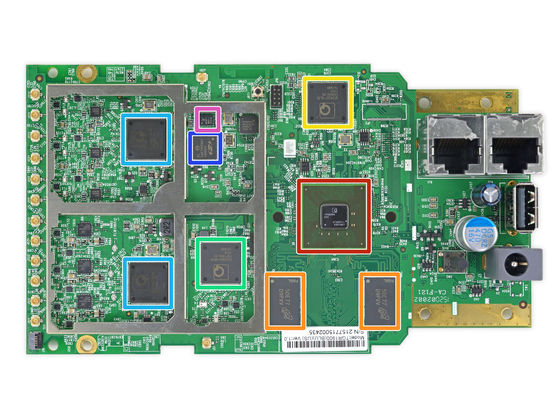
In addition, three red frames are the "SKY 2623 L" amplifier for 2.4 GHz band manufactured by Skyworks Solutions. The three orange frame parts are the amplifiers used for wireless communication in the 802.11ac in the 5 GHz band "SKY 85405-11". The yellow frame part is the chip for Bluetooth connection made by QUALCOMM ACLOSS "3012 - BL 3 D". An antenna for Bluetooth is in the yellow green part.
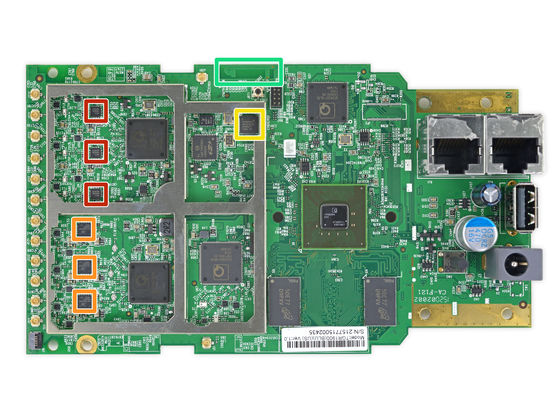
Micron's 4 GB NAND Flash memory "MTFC 4 GACA AAM". Micron's 64 Mb SPI flash "25 Q 064 A" is in the blue frame part. In the purple frame part is Infineon'sTPM"SLB 9645".

That's why the decomposition of OnHub is complete. The decomposition difficulty level is "4" in 10 steps (the smaller the number is, the harder it is), the level which is slightly harder to decompose than the standard level. Most of OnHub is fixed with a clip and iFixit points out that these clip parts can be broken during disassembly while saying "This is much better than using adhesive." . Also, "speaker is interchangeable" "small antenna connector seems to be broken during disassembly" "It is a fairly complicated terminal, it is extremely difficult to disassemble or assemble."
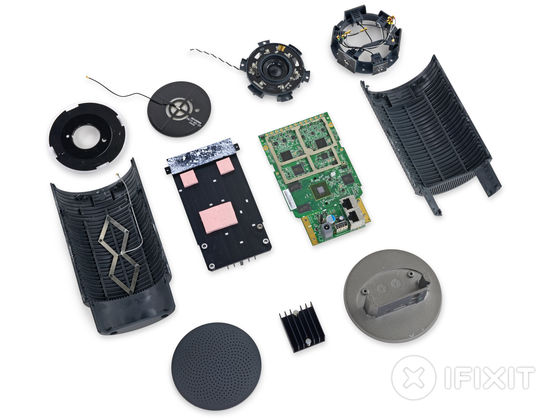
Related Posts:
in Hardware, Posted by logu_ii






